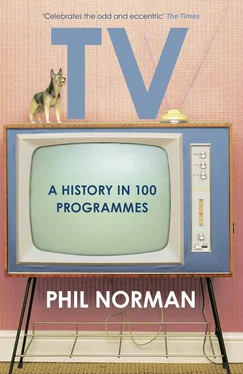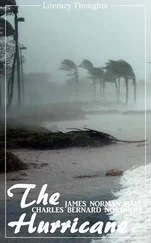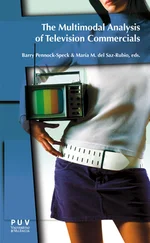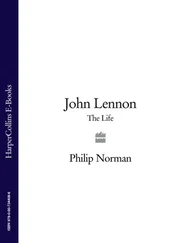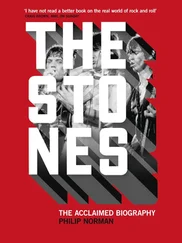More usefully, Lodge worried about content, noting that the majority of messages sent by another recent scientific triumph – the transatlantic telegraph cable – were ‘rubbishy’. ‘It is no use enlarging our powers of communication,’ he warned, ‘if we have nothing worthwhile to say.’4 The insubstantial nature of the early demonstrations didn’t help – even John Logie Baird provoked a wave of cheap laughs when he based his first telerecording demo around a cabbage.
Initially the preserve of the rich, the take up of TV spread after the Second World War as prices dropped and services improved. Older media, who had originally described it as an elitist fad for well-to-do stay-at-homes, now tried to dismiss it as a pernicious influence on those less stable, less educated than themselves. A snobbish line in the fifties had it that people were raising H-shaped aerials over their houses to make up for all the ‘H’s dropped inside them.
It may have projected a serene, slightly aloof air on screen, but behind the cameras post-war television was paddling like mad, inventing a new medium on the hoof, often with whatever came to hand. Studios looked less like the glistening caverns of today and more like the shop floor of an engineering works under the stewardship of a hyperactive ten-year-old. A profession was being steadily built through years of committed bodging.
America initially lagged behind Britain, Germany, France, Italy, Russia and Japan in television take up, but soon made up for lost time. NBC’s first electronic transmission in 1936, featuring comedian Ed Wynn, ignited an industrial boom that in little over a decade would result in four national television networks broadcasting to over four million set-equipped homes. The US network system, commercially funded and powered by the twin big tickets of sports and vaudeville, was voracious and unstoppable. By the late 1940s its diverse schedule offered programmes that were sombre ( Court of Current Issues, People’s Platform ), sophisticated ( Café de Paris, Champaign and Orchids ) and silly ( Buzzy Wuzzy, Campus Hoopla ).
This last category caused unease back in Britain, where ITV’s arrival in the mid-1950s threatened the state-run BBC order. The US broadcasts of Elizabeth II’s coronation had included grinning appearances by NBC’s mascot, chimpanzee J. Fred Muggs, and there were concerns about a similar crassness creeping in to British broadcasting. The Tories championed ITV, Labour vilified it, while Liberal councillor Paul Rose reminded both sides that ‘there is always freedom of the knob.’5
Technological advance was an enduring obsession, if not always taking place as quickly as predicted: a committee set up in 1943 to prepare for British television’s post-war return anticipated the swift invention not only of colour, but 1000-line high definition and 3D.6 A quarter of a century later, round the clock coverage of the Apollo missions fused the Television Age with the Space Age for as long as the latter held out, and made a star of James Burke, who went on to present the most lavish science programmes ever made, travelling further on a BBC expense account than Armstrong ever managed in a Saturn V . On a smaller scale, potting shed innovation was everywhere, from the BBC’s home computer sideline to abortive plans in the late 1960s for contestants on The Golden Shot to operate the game show’s famous crossbow from their own front rooms, via a Golden Joystick in a James Bond-style Golden Suitcase, specially delivered in a Golden Car. The technology, the producers made clear, boasted Golden safety features as ‘we don’t want any nut shooting Bob Monkhouse.’7
Around this time came the first symptoms of two ailments that would dog the medium for evermore. The first was the transformation of the social embarrassment surrounding television among the middle classes into an ironic ‘guilty pleasure’. As John Osborne confessed to Kenneth Tynan in 1968, ‘When TV is dreadful, it’s thoroughly enjoyable. After you’ve seen The Golden Shot a couple of times, it acquires a special horror of its own.’8 The second, closely related to the first, was nostalgia. In the dying days of 1969, ITV screened A Child of the Sixties , taking the temperature of the decade with a rummage in the archive. This sort of thing was nothing new in itself, but for the first time whimsical talking heads were added, including ‘ the impressions they made on a receptive young mind’ – an Oxford undergraduate named Gyles Brandreth. The bar for retro-punditry was set from that moment.
The study of television doesn’t have to be so apologetic. Television may not be high art, but many artists have worked in it, regardless of its condemnation as unclean by the world’s cultural custodians. Samuel Beckett wrote for it. Kingsley Amis presented a pop music show on it. Carol Ann Duffy laboured in it writing cockney gags for Joe Brown’s snakes and ladders game show Square One on her way to becoming Poet Laureate.
As a vivid source of graphic reportage, television transformed our relationship with the world at large. When the Vietnam War stopped being a few fuzzy black and white images accompanied by sober paragraphs of text and became an avalanche of explicit, full-colour moving horrors, western populations seriously reconsidered the wisdom of military adventures. Dramatists, meanwhile, found a unique new medium that was more intimate than cinema, more precise than the theatre and which could pluck the hearts of millions. Worries about the creation of a world of antisocial couch ornaments were outweighed by a sense of barriers and borders vaulted by satellite, a shift in the way we looked at the world that wouldn’t happen again until the advent of the Internet.
If that arrival meant the writing was on the wall for television’s place in the media vanguard, for most it was hard to read. Prestel, the British Post Office’s pioneering online data service, was struggling by 1982. Punters predicted that staring at a load of text was so passé in the age of the image it would never catch on. ‘Prestel and The Two Ronnies … have no more in common than the Financial Times and Hammond Innes,’ reasoned Hamish McRae. ‘It would further follow that it is pointless to give people who want to watch The Two Ronnies a Prestel set that tells them the time of the trains to Newcastle.’9 Such faultless logic buoyed TV’s unassailable self-image until it was far too late, at which point panic set in.
Factual programmes in particular are acutely conscious of the Internet looking over their shoulders. Current affairs channels pride themselves as vital parts of the democratic machine, but TV could never make on-screen democracy work. In May 1982, World in Action tried to atone for the scarcity of news coming out of the Falklands Conflict with a high-tech viewer vote. This consisted of 75 homes being equipped to give instant reaction to the big questions of warfare. The set-up worked fine, but a naively honest on-screen tally of the total votes showed less than half the audience, specially wired in at great fuss, were actually bothering. Viewer participation remains largely a token gesture – and, thanks to premium rate phone lines, often the token that pays for the programme.
Before the Internet took its place as the number one scourge of decent society, television’s constant stream bred disdain. A novel takes its place in the literary canon. A film lines up in the cinematic pantheon. Television programmes just float there, then vanish. While films relate to other films at a distance, via elegant homage or the critic’s comparative whim, a TV show arrives surrounded by other shows before and after, on other channels, from other seasons. It’s an adaptation of this Danish show, a reboot of that long-forgotten space opera, or a strange amalgam of those two 1970s programmes presented by that newsreader who’s suddenly all over the place after she showed how game she was, doing that soap opera parody on a charity special. Never mind placing a programme in context, it’s an afternoon’s work just to pull the thing out of the undergrowth.
Читать дальше
